Creating a warm, inviting, and uncluttered living room doesn’t require elaborate renovations or extensive budgets. By focusing on simple strategies—like embracing neutral color schemes, incorporating multifunctional furniture, and maximizing natural light—you can transform any space into a serene retreat. Layering different textures, adding a touch of greenery, and strategically placing mirrors or lighting fixtures all contribute to a balanced, harmonious atmosphere. Drawing inspiration from Scandinavian, Japandi, and minimalist trends, these 20 simple living room ideas prioritize functionality and style, ensuring that your space remains both beautiful and practical for everyday living.
1. Neutral Color Palette
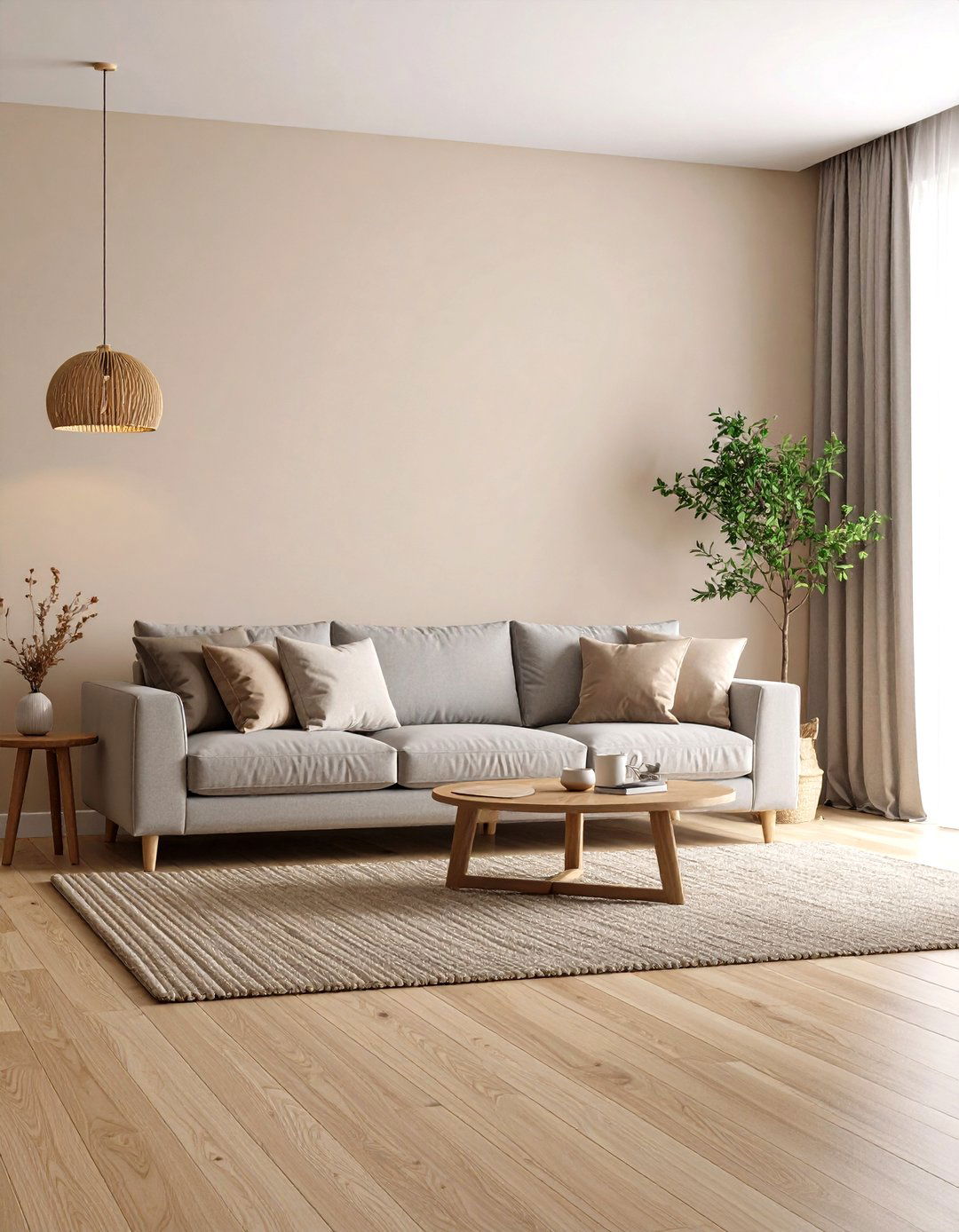
Opt for a neutral color palette as the foundation of your living room design. Shades like beige, ivory, and soft gray create a calming backdrop that can adapt to various accents and décor changes over time. Neutrals also make a room feel more spacious and allow statement pieces—such as artwork or a colorful rug—to stand out. Designers recommend pairing beige with complementary hues like muted blues or light grays to add visual interest without overwhelming the senses.
2. Accent Wall

Introduce an accent wall to inject personality without overhauling the entire room. By painting one wall in a contrasting shade or applying textured wallpaper, you create a focal point that anchors the space. This approach breaks up a monotonous color scheme and highlights architectural features or art displays. Accent walls can range from a bold charcoal to a subtle pastel, depending on your style, and offer a cost-effective way to refresh your living area.
3. Bring in Greenery
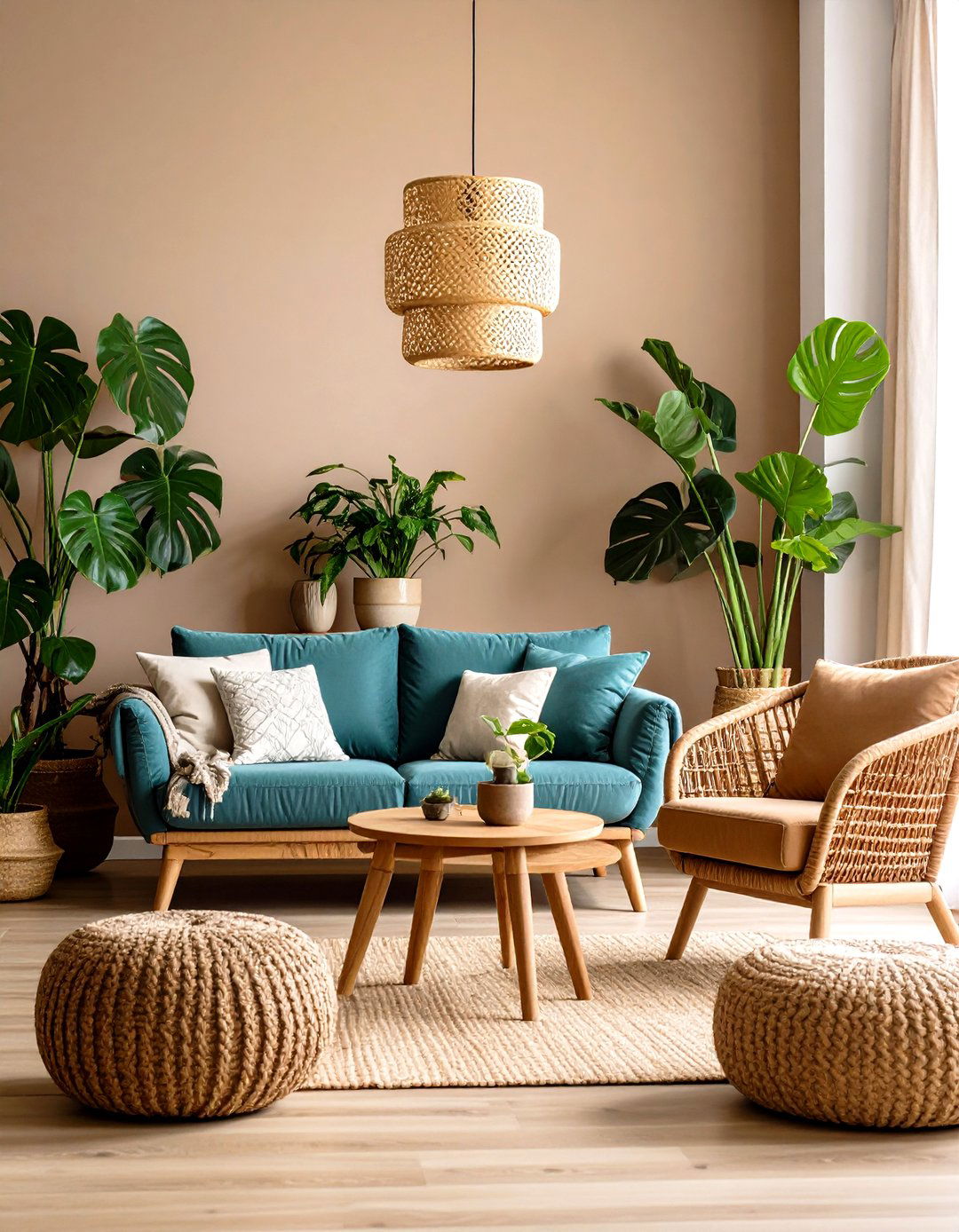
Live plants add life, color, and improved air quality to any living room. Incorporate a mix of floor-standing plants like monstera or fiddle leaf figs alongside smaller potted varieties such as succulents or ferns. Plants soften hard lines and introduce organic shapes that balance structured furniture. Grouping pots of varying heights and materials—ceramic, terracotta, or wicker—enhances visual appeal while promoting a calming, natural ambiance.
4. Multifunctional Furniture
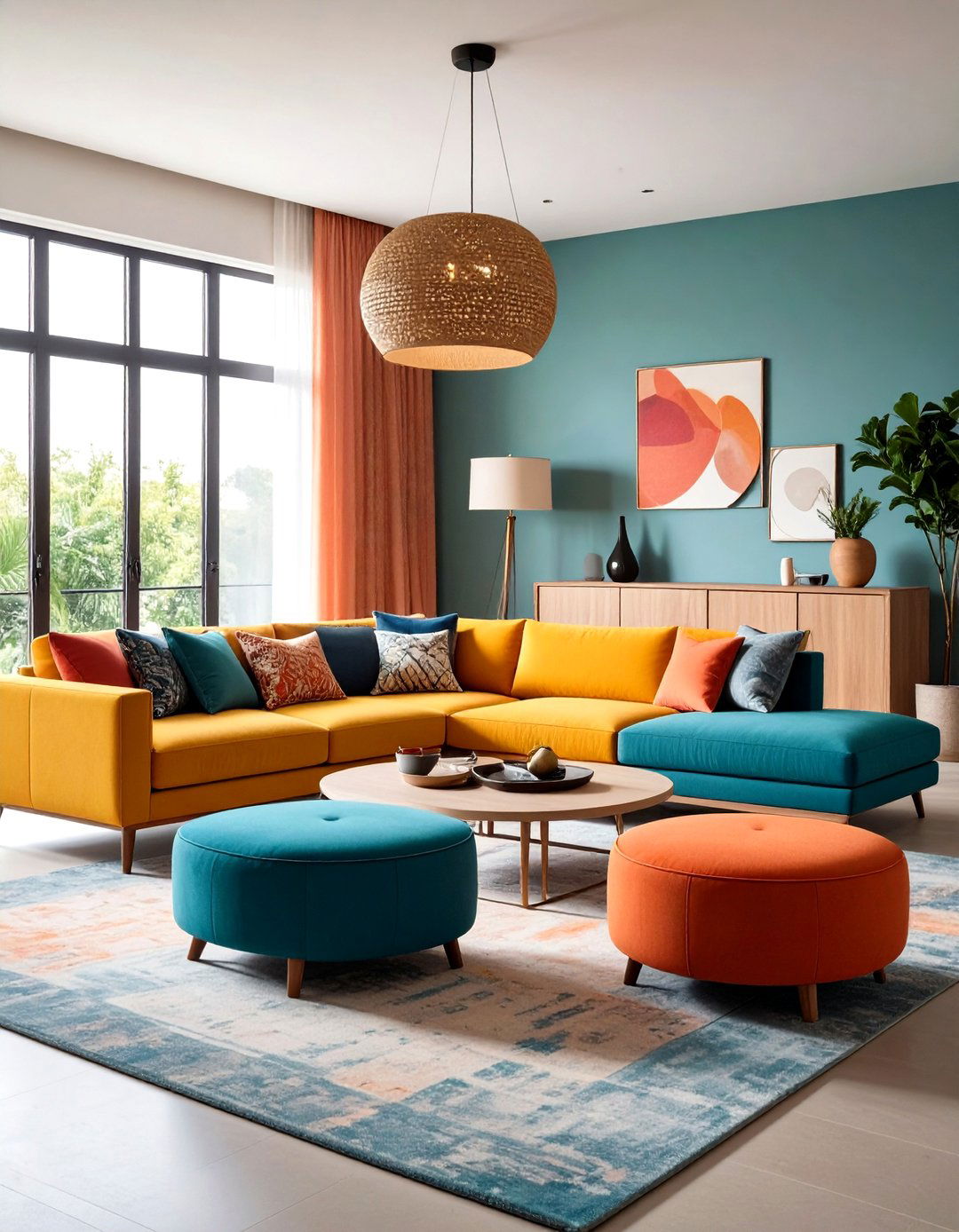
Select furniture pieces that serve multiple purposes to maximize space and functionality. Storage ottomans act as extra seating, coffee tables, and hidden stowaways for blankets or magazines. Convertible sofas with built-in drawers or fold-out mechanisms accommodate guests without sacrificing style. Investing in pieces designed for adaptability ensures your living room remains organized and versatile, whether hosting gatherings or enjoying quiet evenings at home.
5. Minimalist Shelving
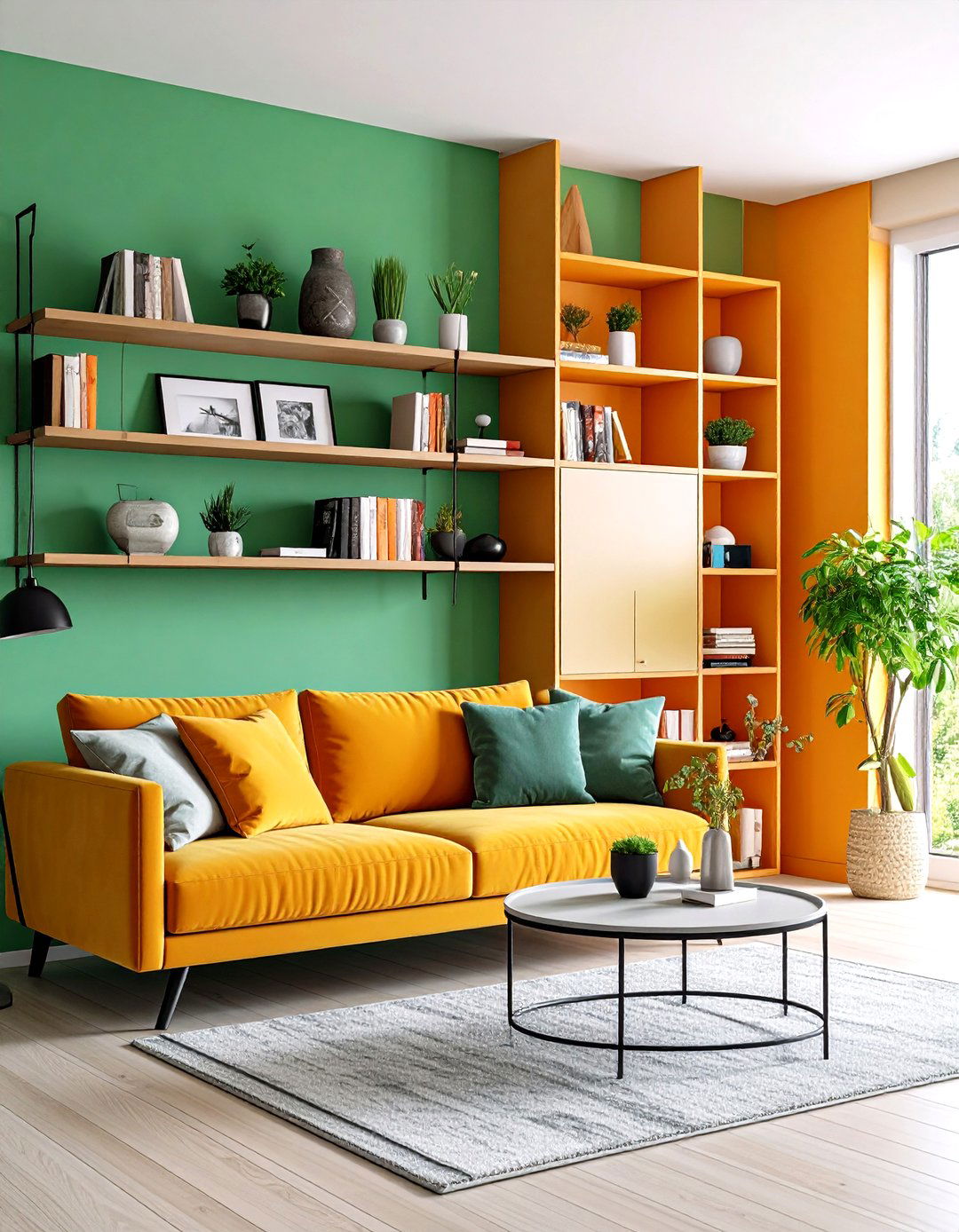
Floating shelves or slim wall-mounted units provide display space without bulky cabinetry. Keep décor minimal by showcasing a few curated books, framed photos, or decorative objects per shelf. This approach maintains an airy feel and prevents visual clutter. Minimalist shelving emphasizes clean lines and allows the wall’s surface to contribute to the room’s openness. A well-balanced arrangement of items on open shelves reinforces a serene, organized atmosphere.
6. Cozy Textiles
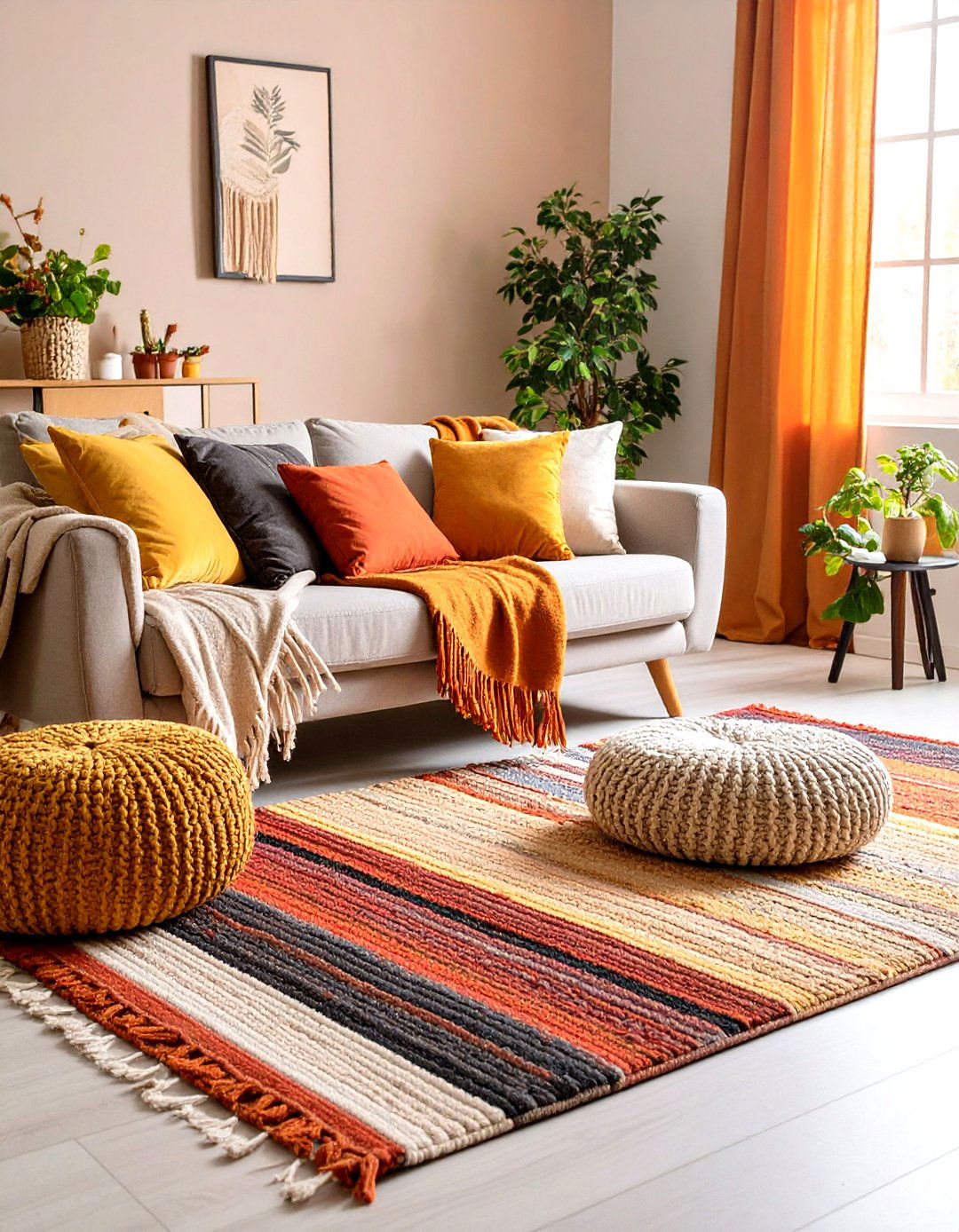
Layering textiles—throws, pillows, and an area rug—adds warmth and tactile comfort. Choose soft materials like cotton, linen, or wool in complementary neutral tones or subtle patterns. A plush rug anchors the seating area and defines the room’s layout. Incorporating a variety of textures, from chunky knit blankets to smooth velvet cushions, invites touch and creates a cozy, inviting environment for relaxation and conversation.
7. Mirrors to Amplify Light
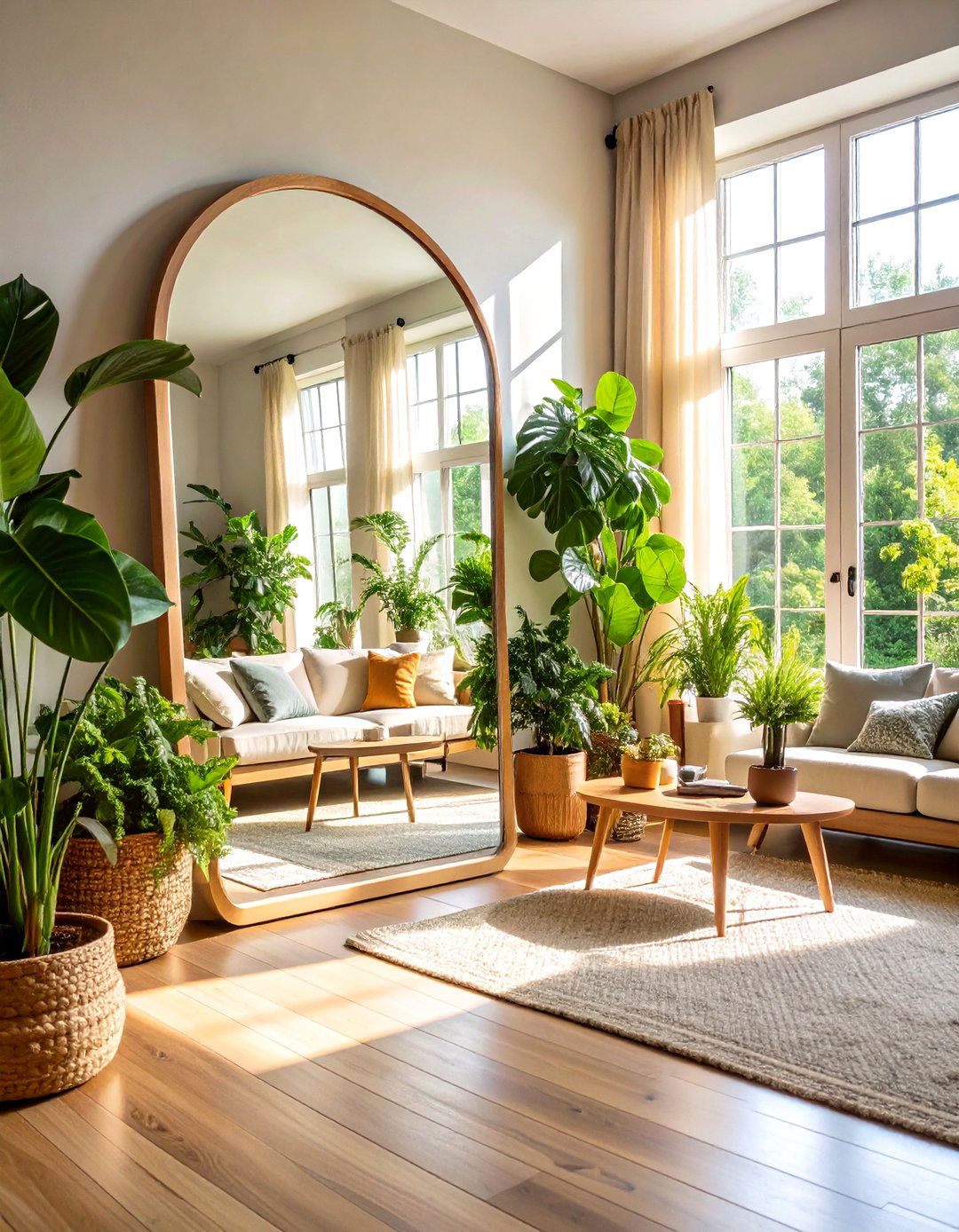
Strategically place mirrors opposite windows to reflect natural light throughout the room. A large floor mirror or a gallery of smaller frames enhances brightness and gives the illusion of added depth. Mirrored surfaces also act as décor elements, reflecting artwork, plants, and architectural details. This simple trick elevates the sense of space and keeps the interior feeling open and airy, particularly in smaller living rooms.
8. Maximize Natural Light
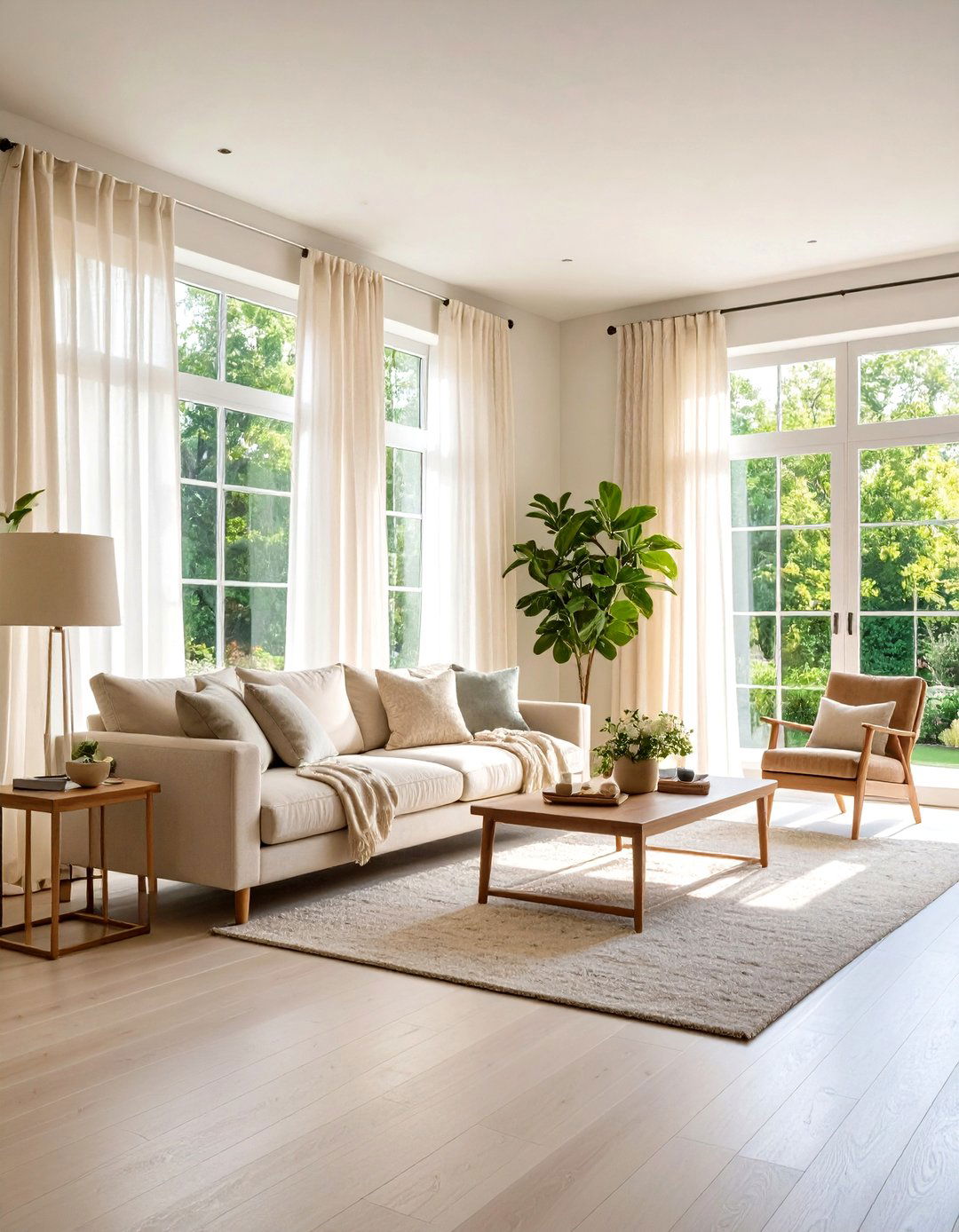
Keep window treatments minimal to allow as much sunlight as possible. Opt for sheer curtains or blinds that can be fully retracted. Position furniture away from windows to avoid blocking light sources. A bright, naturally lit room feels larger and more welcoming. Complement natural light with light-colored walls and reflective décor elements, such as glass vases or metallic accents, to distribute illumination evenly.
9. Layered Lighting

Combine ambient, task, and accent lighting to create a versatile and inviting atmosphere. Floor lamps and table lamps provide localized task lighting for reading or conversation, while overhead fixtures add general illumination. Accent lights, like wall sconces or string lights, contribute mood and highlight architectural features. Layering light sources allows you to adjust the room’s ambiance to suit various activities and times of day.
10. Open Shelving Displays
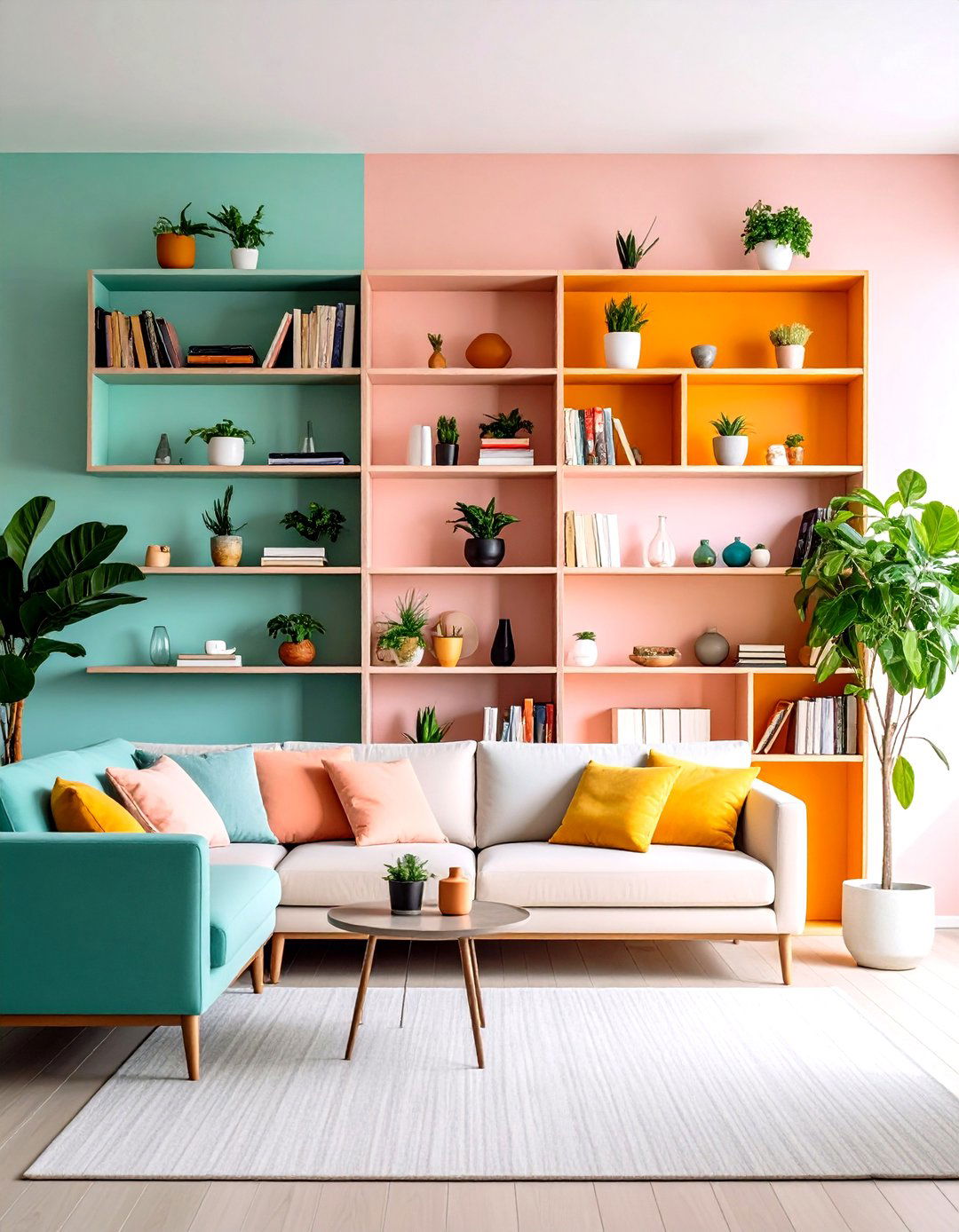
Open shelving units offer both storage and decorative opportunities. Arrange books, art objects, and small plants across the shelves to personalize the space. The key is to maintain balance: avoid overcrowding by alternating between functional items and decorative pieces. Open shelving emphasizes the room’s vertical dimension and provides easy access to favorite books and collectibles.
11. Rounded Furniture

Incorporate curved shapes to soften the room’s geometry. Rounded sofas, circular coffee tables, or arched floor lamps introduce gentle lines that counterbalance rectangular elements. These organic shapes foster a more relaxed, approachable environment and encourage conversation by directing focus inward.
12. Hidden Storage Ottomans
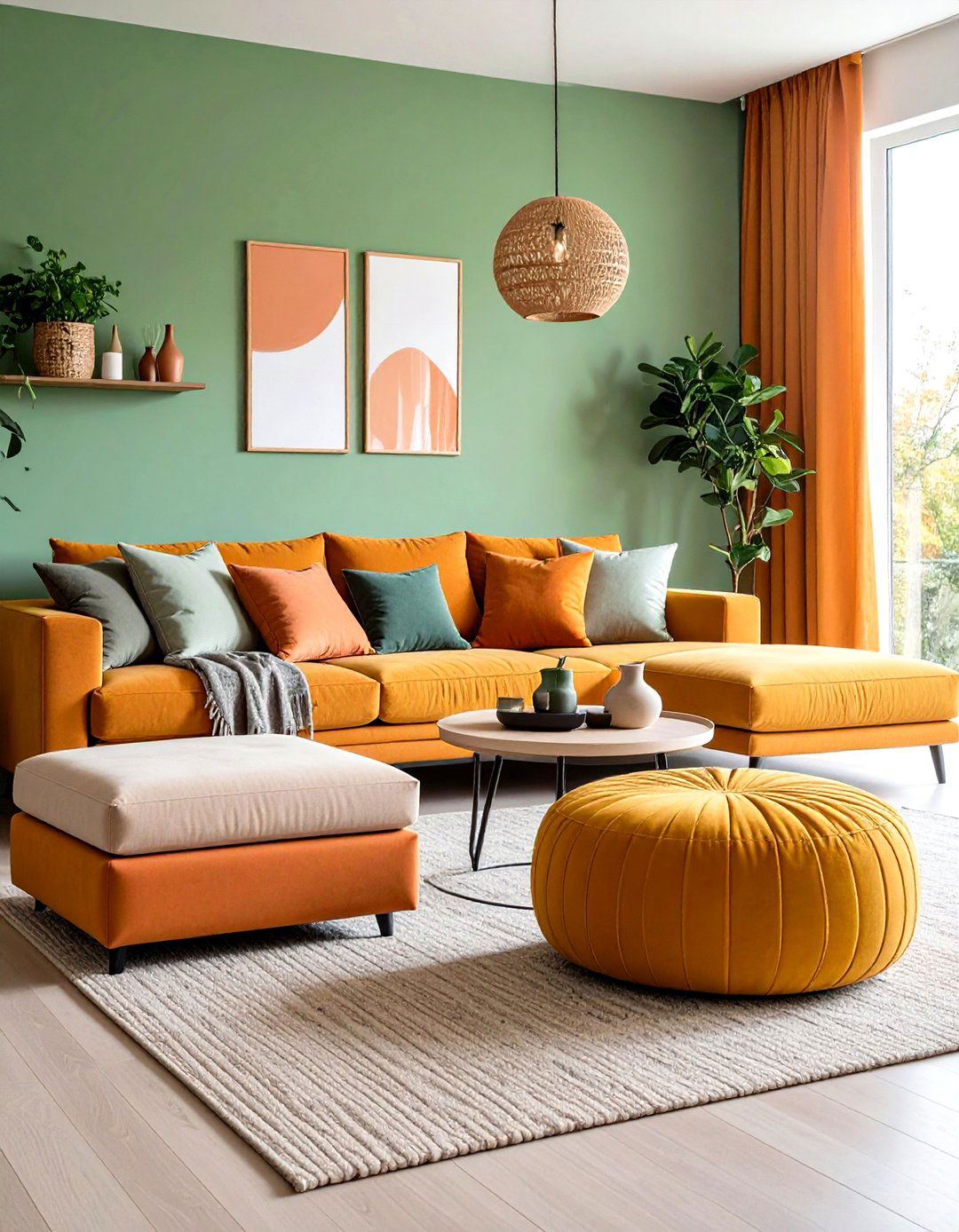
Use ottomans with lift-up tops to conceal extra pillows, throws, or children’s toys. This dual-purpose furniture piece can function as seating, a footrest, or a surface for trays when entertaining. By integrating hidden storage, you maintain a tidy living area while ensuring essentials remain within reach.
13. Gallery Wall Art
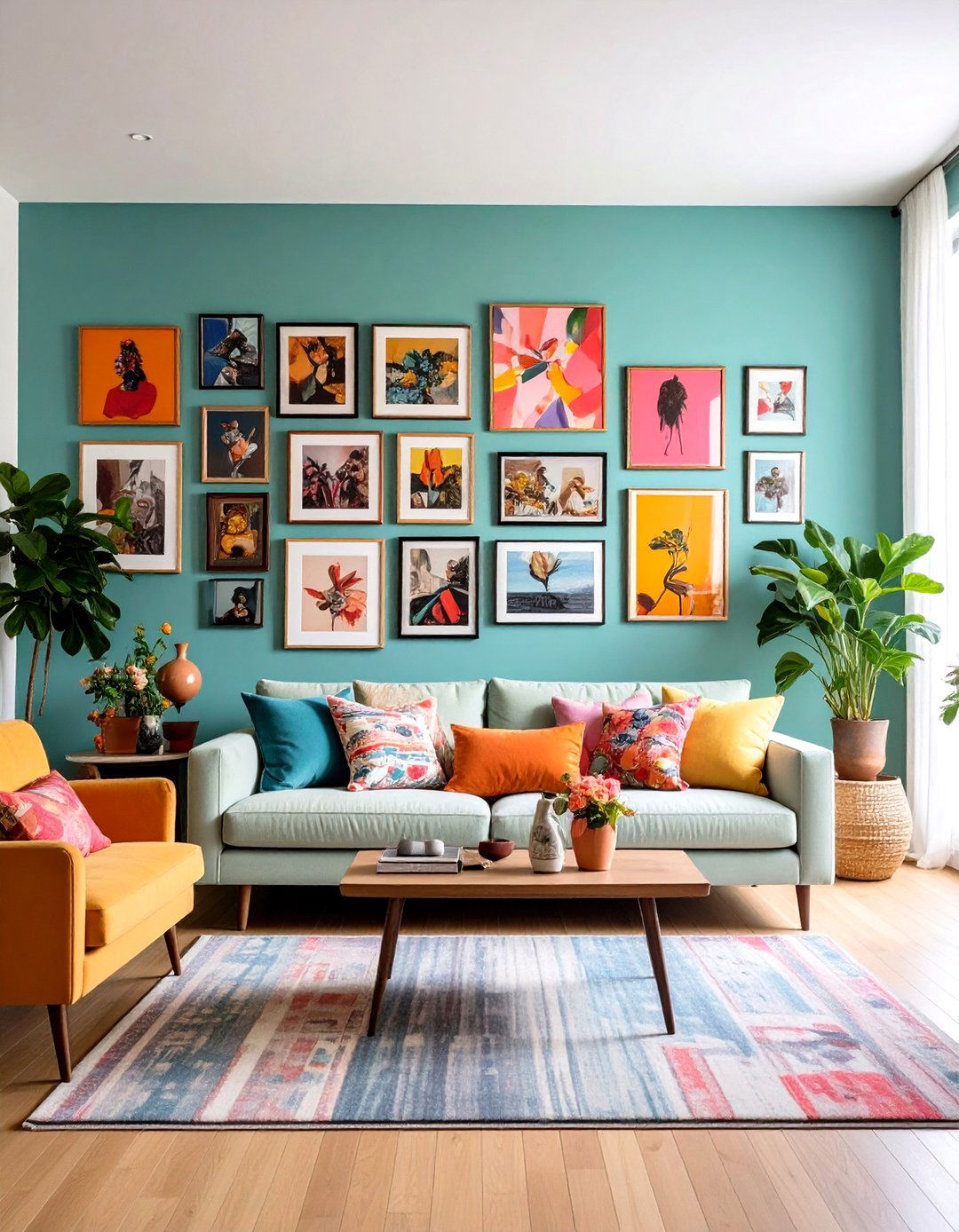
Create a gallery wall to personalize and energize your living room. Mix framed prints, photographs, and small wall sculptures in a cohesive layout. Start with the largest piece and build outward, keeping consistent spacing between frames. This curated display adds visual interest and tells a story about your interests and travels.
14. Mix Textures
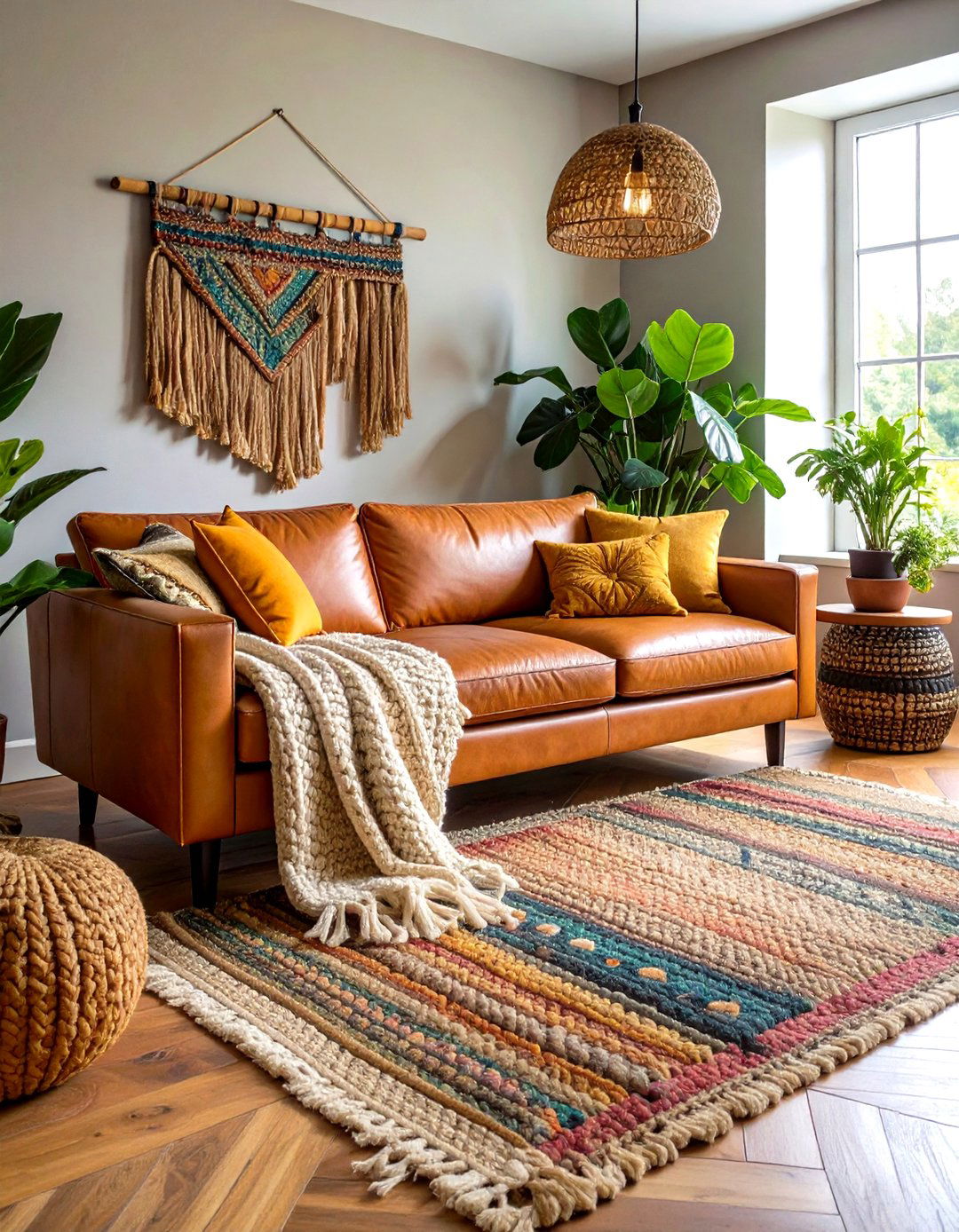
Combine smooth, rough, and patterned surfaces for depth. For example, pair a sleek leather sofa with a chunky knit throw and a jute rug. Mix metal, wood, and textiles to introduce contrasting tactile experiences. Texture variety prevents a room from feeling flat and encourages an engaging, layered interior.
15. Indoor-Outdoor Flow
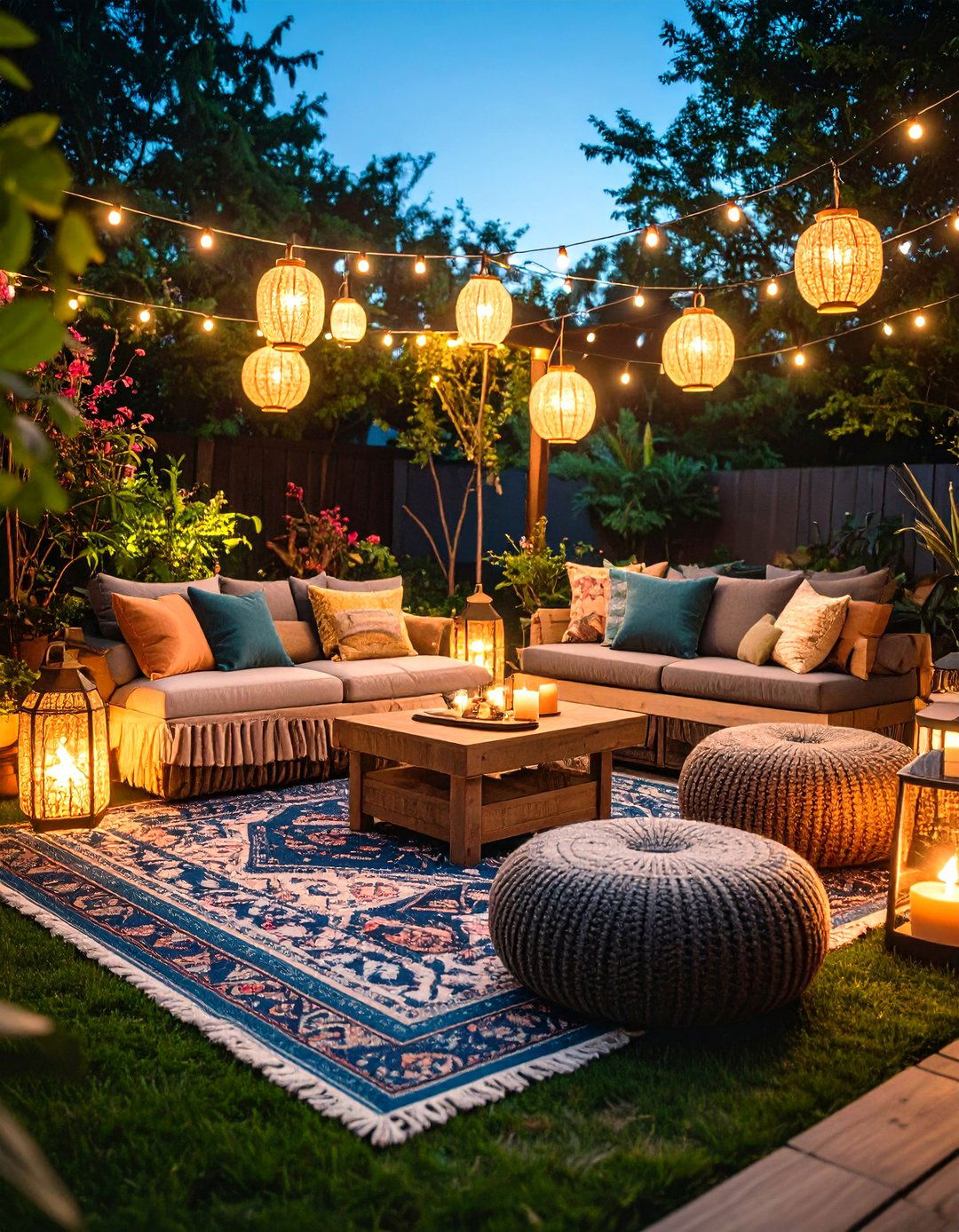
Blur the line between indoors and outdoors by using durable, weather-resistant decor near entryways or patios. Ottomans with water-resistant fabric, outdoor rugs, and decorative lanterns create continuity. Incorporating outdoor elements—like clay pots or wooden stools—within the living room fosters a relaxed, casual vibe.
16. Scandinavian Simplicity
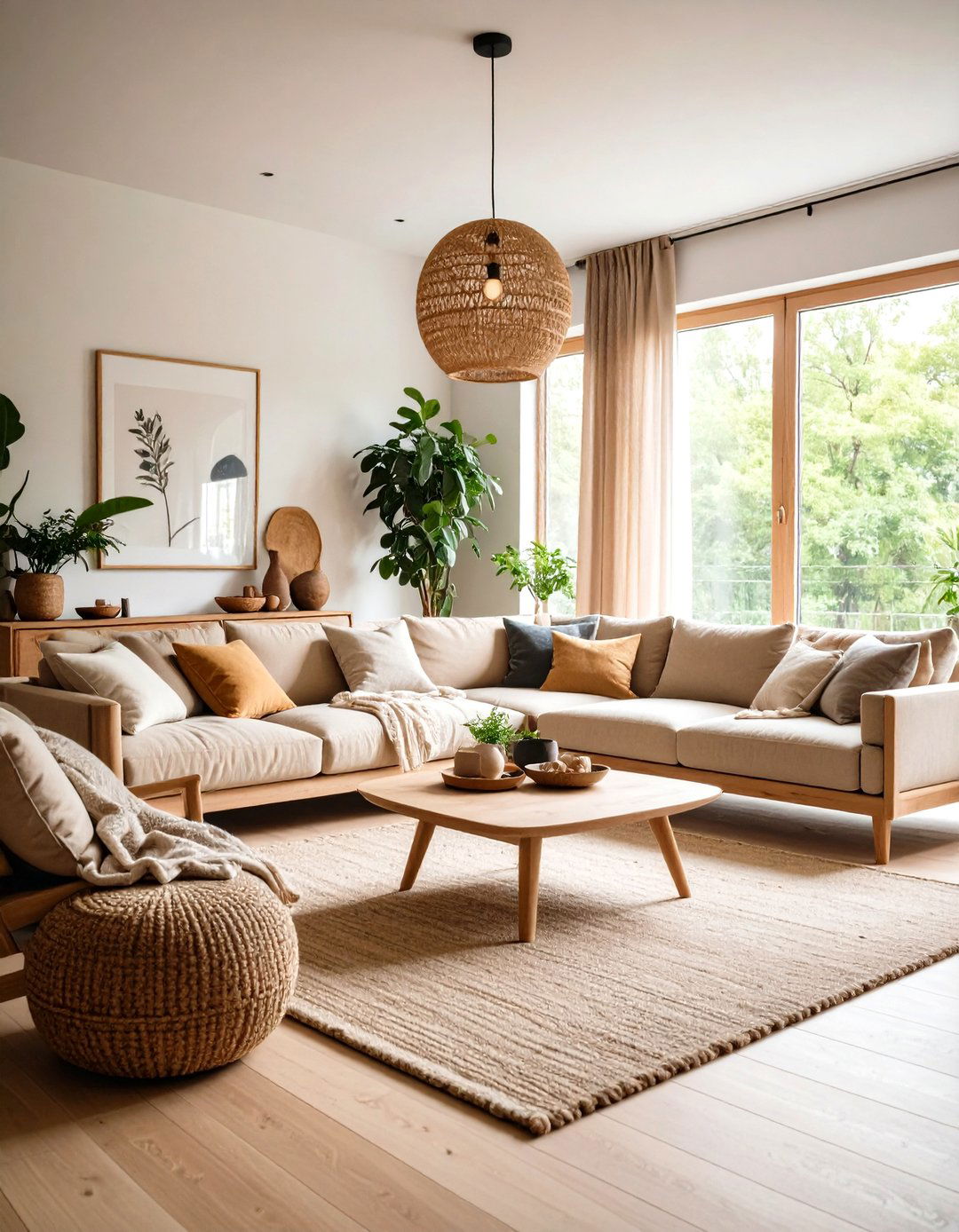
Embrace Scandinavian design principles: clean lines, functional furniture, and light hues. Select pieces with slim profiles and natural materials such as light oak or birch. Keep décor minimal and focus on practicality. A Scandinavian-inspired living room feels serene, stylish, and uncluttered.
17. Japandi Fusion
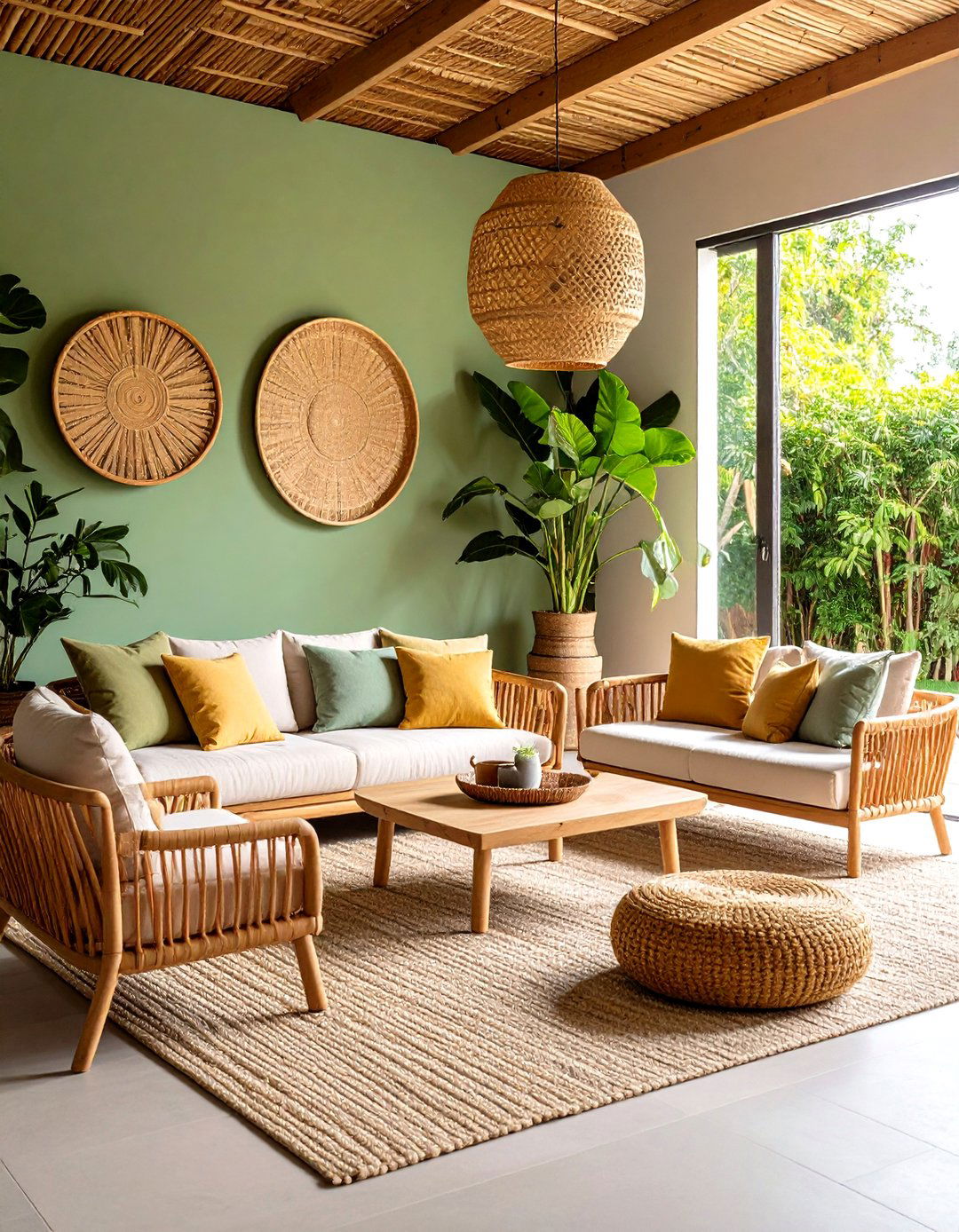
Merge Japanese minimalism with Scandinavian functionality to achieve the Japandi aesthetic. Opt for low-profile furniture, muted color schemes, and natural textures like bamboo or rattan. The result is a balanced, tranquil space that emphasizes calmness and simplicity.
18. Black Accents
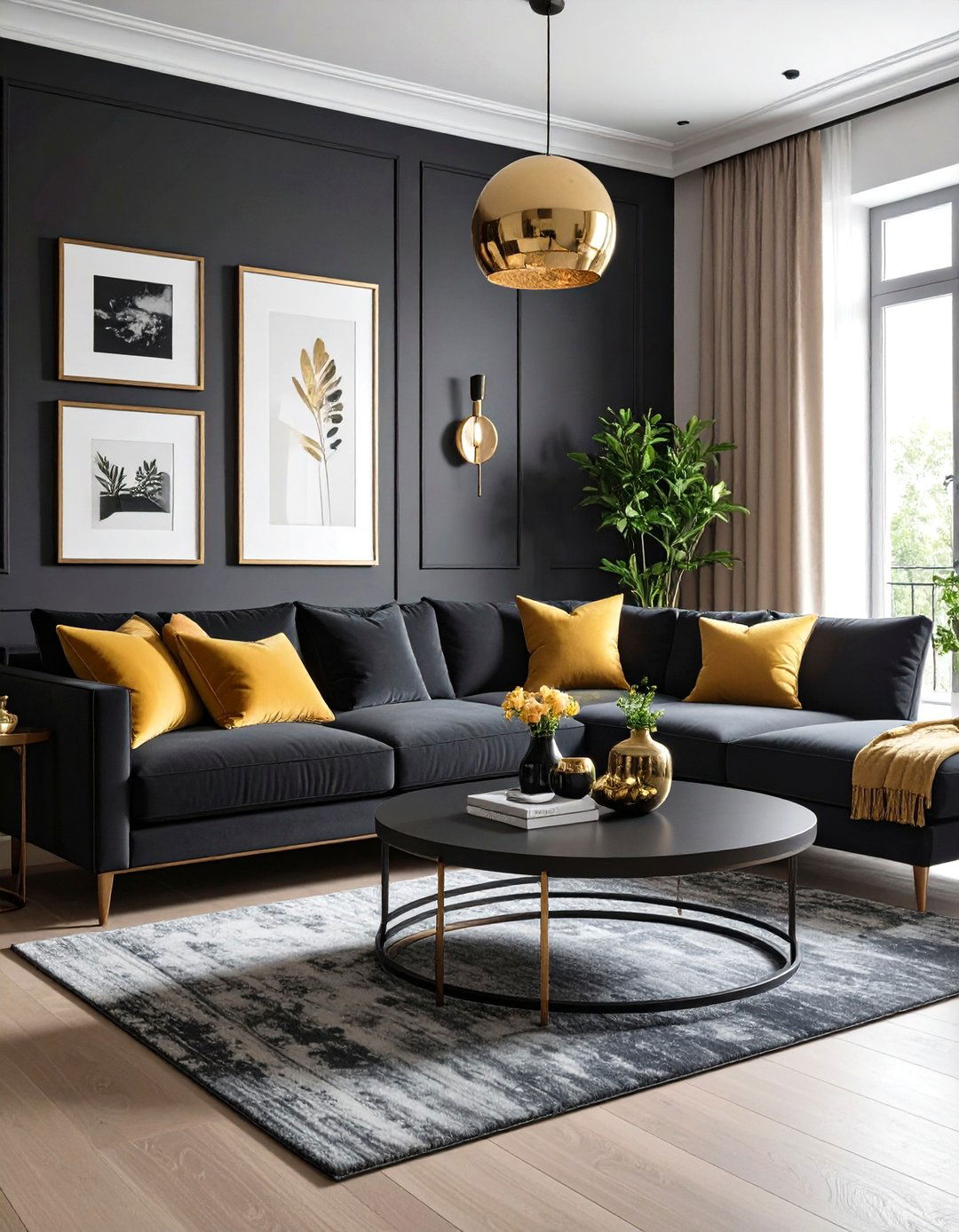
Incorporate black elements—such as a matte coffee table, picture frames, or hardware—to add contrast and sophistication. Against a neutral backdrop, black accents ground the design and prevent the room from feeling too washed out. Use sparingly to maintain the overall airy aesthetic.
19. Area Rugs to Define Zones
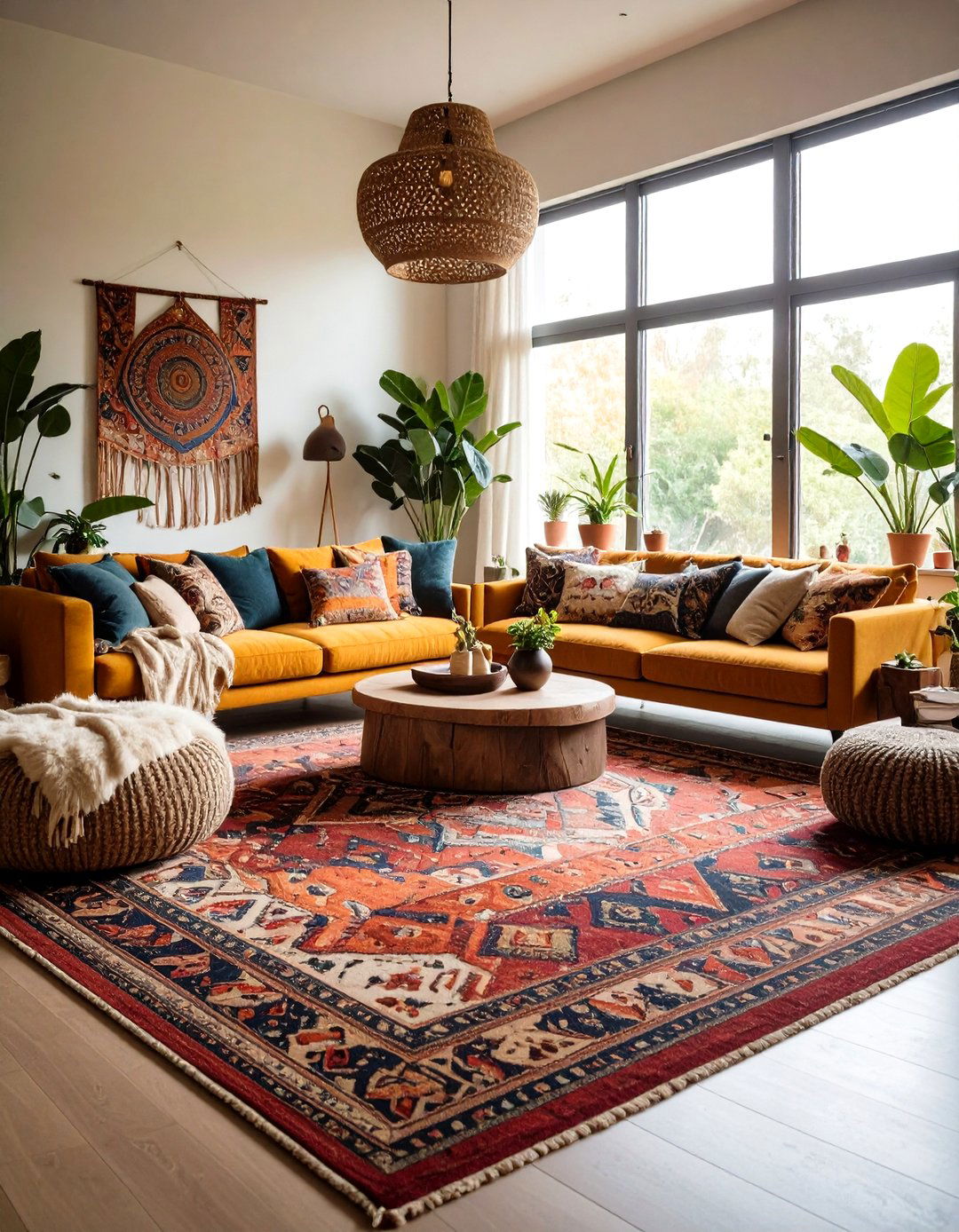
Anchor seating areas with a well-sized rug that extends beyond furniture legs. Rugs introduce warmth, pattern, and sound absorption. In open-plan spaces, use different rugs to delineate living, dining, or reading nooks, ensuring each zone feels distinct yet cohesive.
20. Floating Furniture Layout
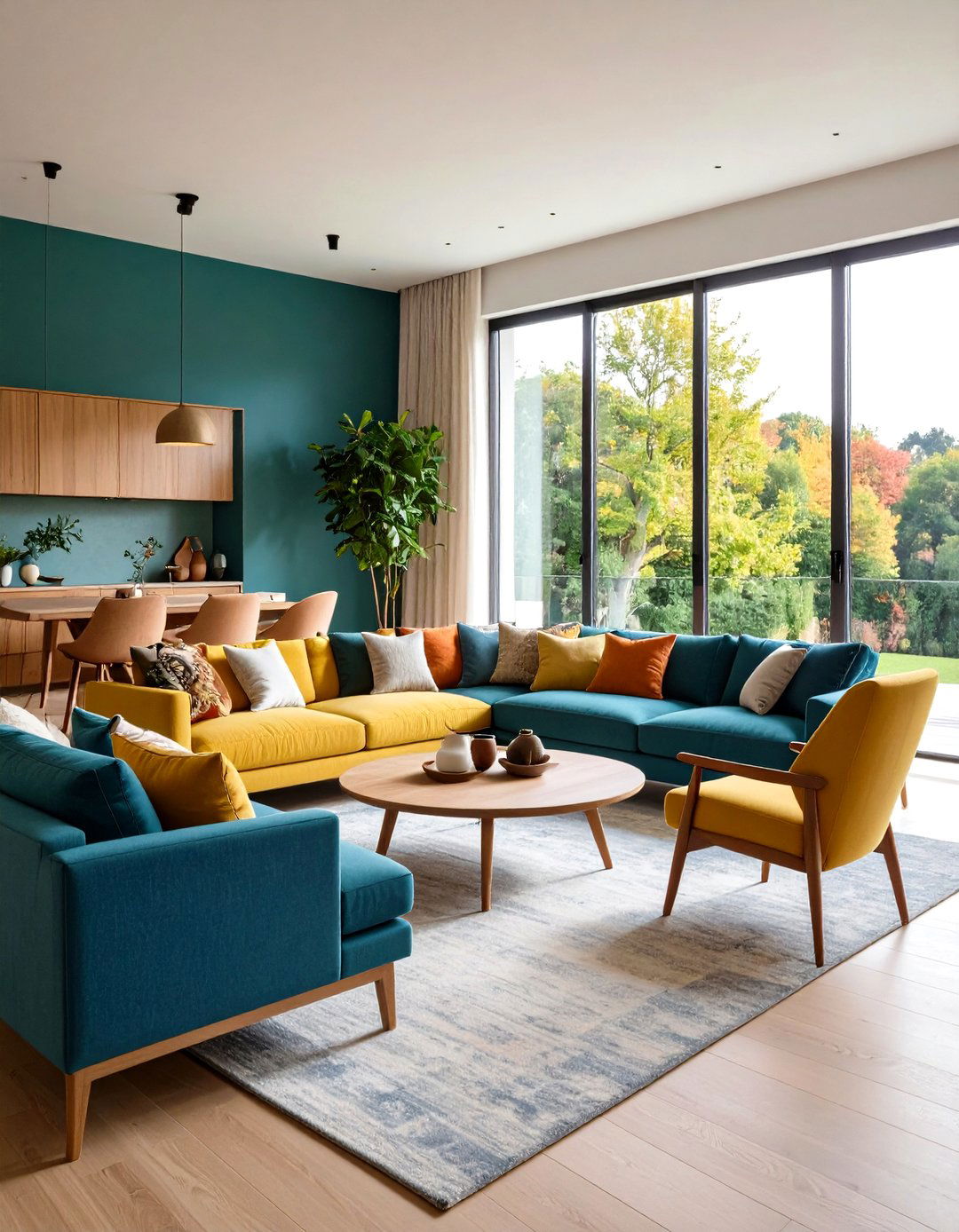
Pull sofas and chairs slightly away from walls to create a sense of depth and flow. Floating furniture enhances traffic patterns and allows light to circulate behind pieces. This layout fosters a more intimate seating arrangement and makes even small rooms feel more expansive.
Conclusion:
By combining thoughtful color choices, strategic lighting, multifunctional furniture, and carefully curated décor, you can create a simple yet impactful living room that suits your lifestyle. These 20 ideas demonstrate how small adjustments—like layering textures, adding greenery, or embracing minimalist shelving—collectively elevate your space. The key lies in balancing functionality and aesthetics to craft a calm, inviting environment that feels both stylish and lived-in.


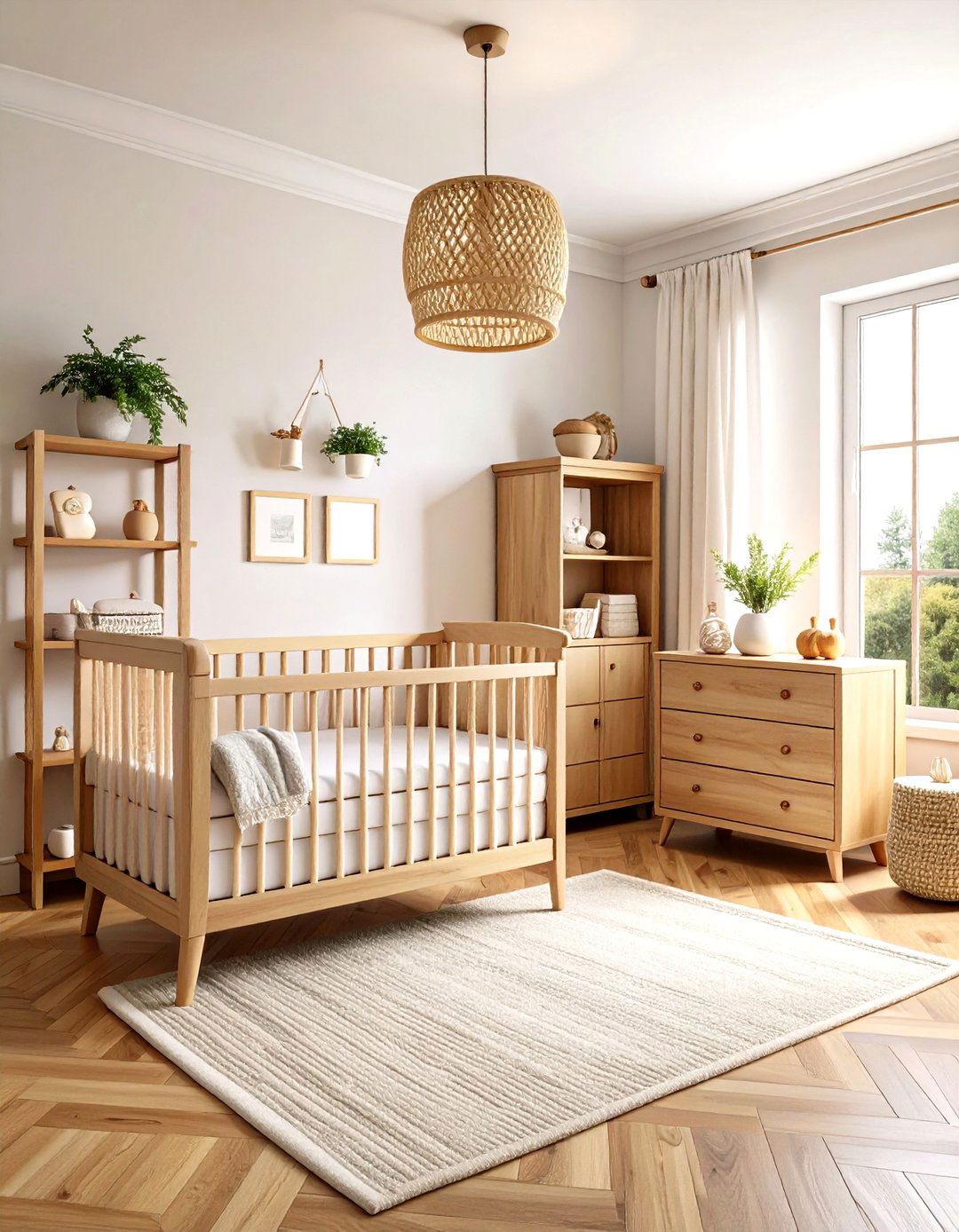

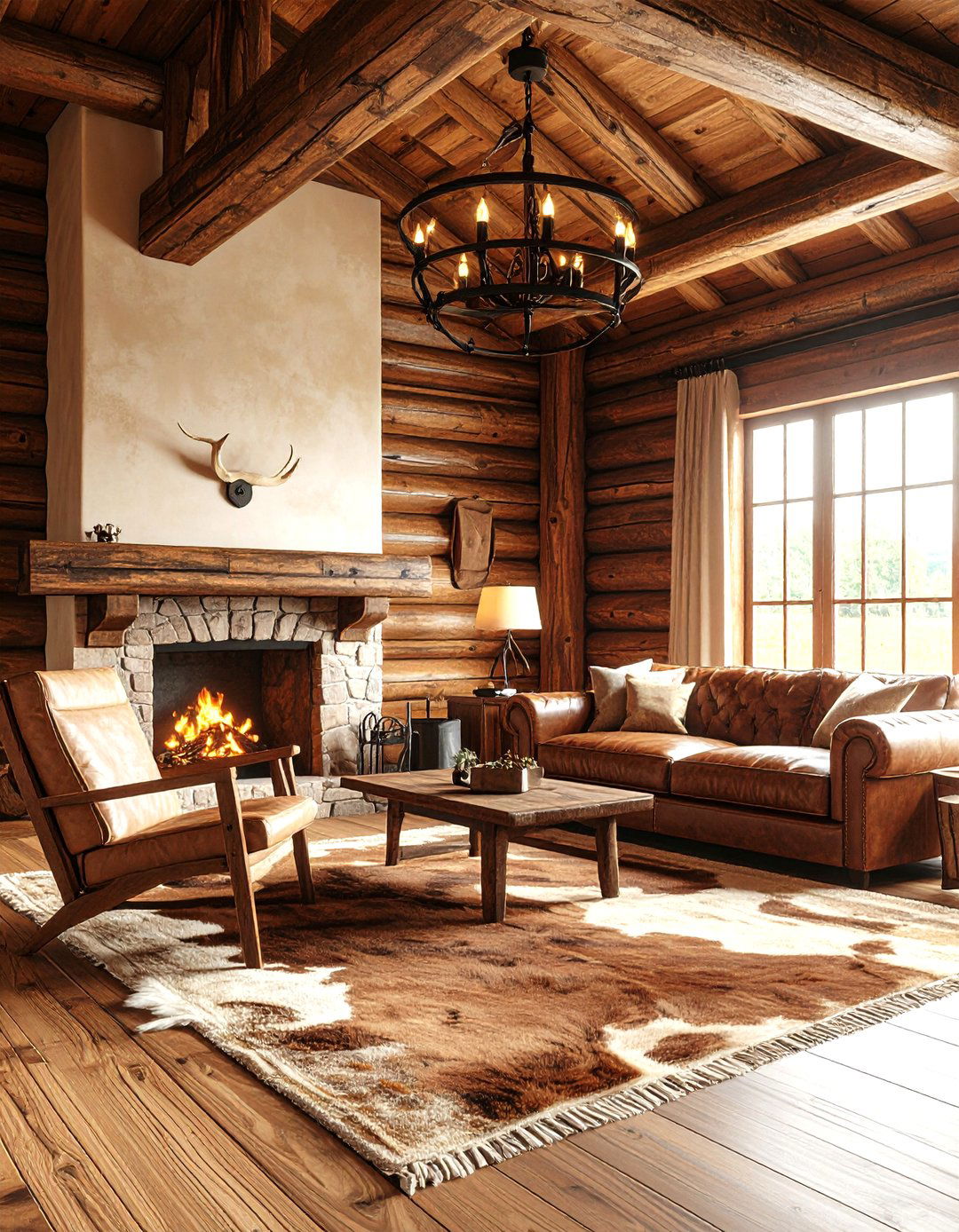
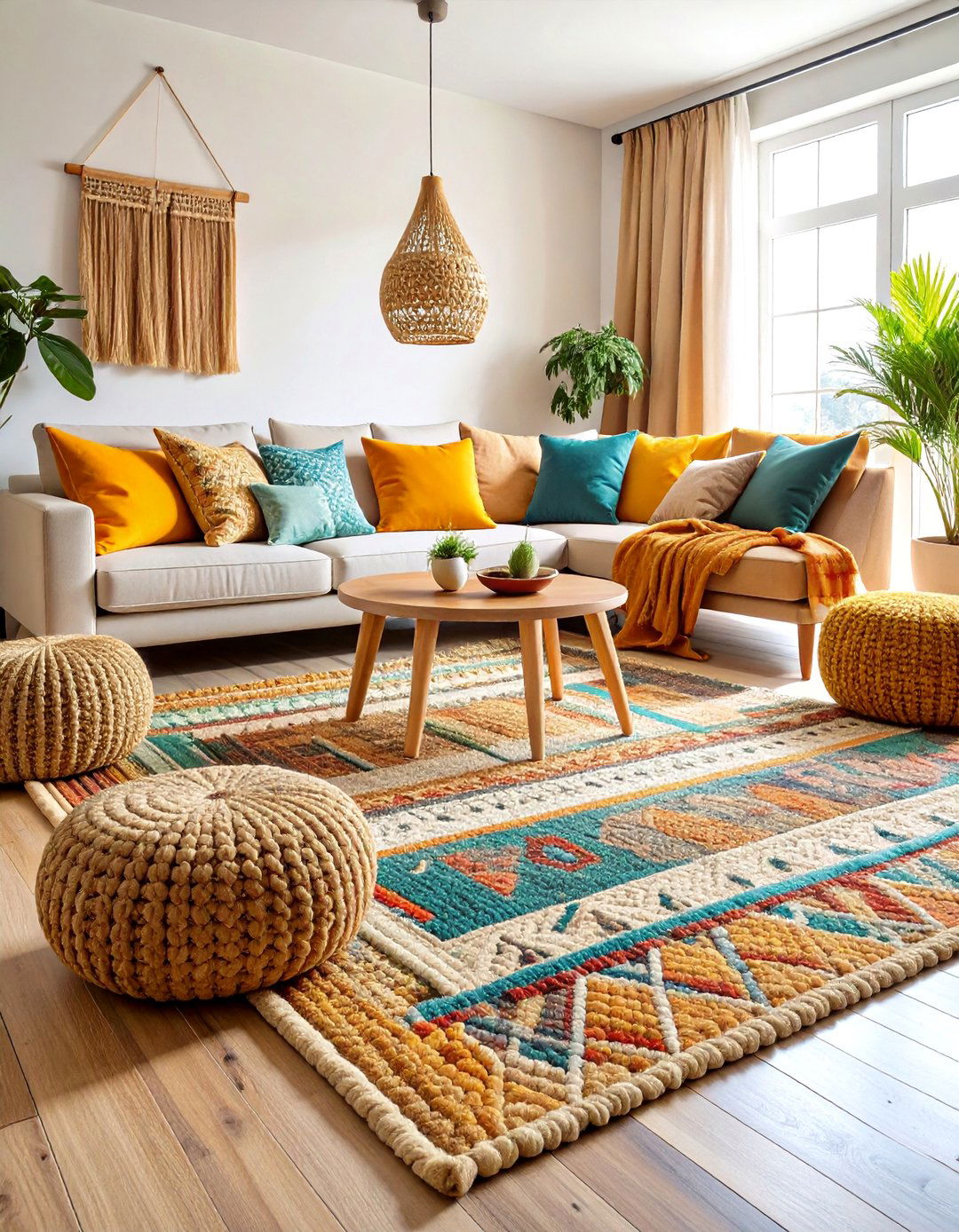
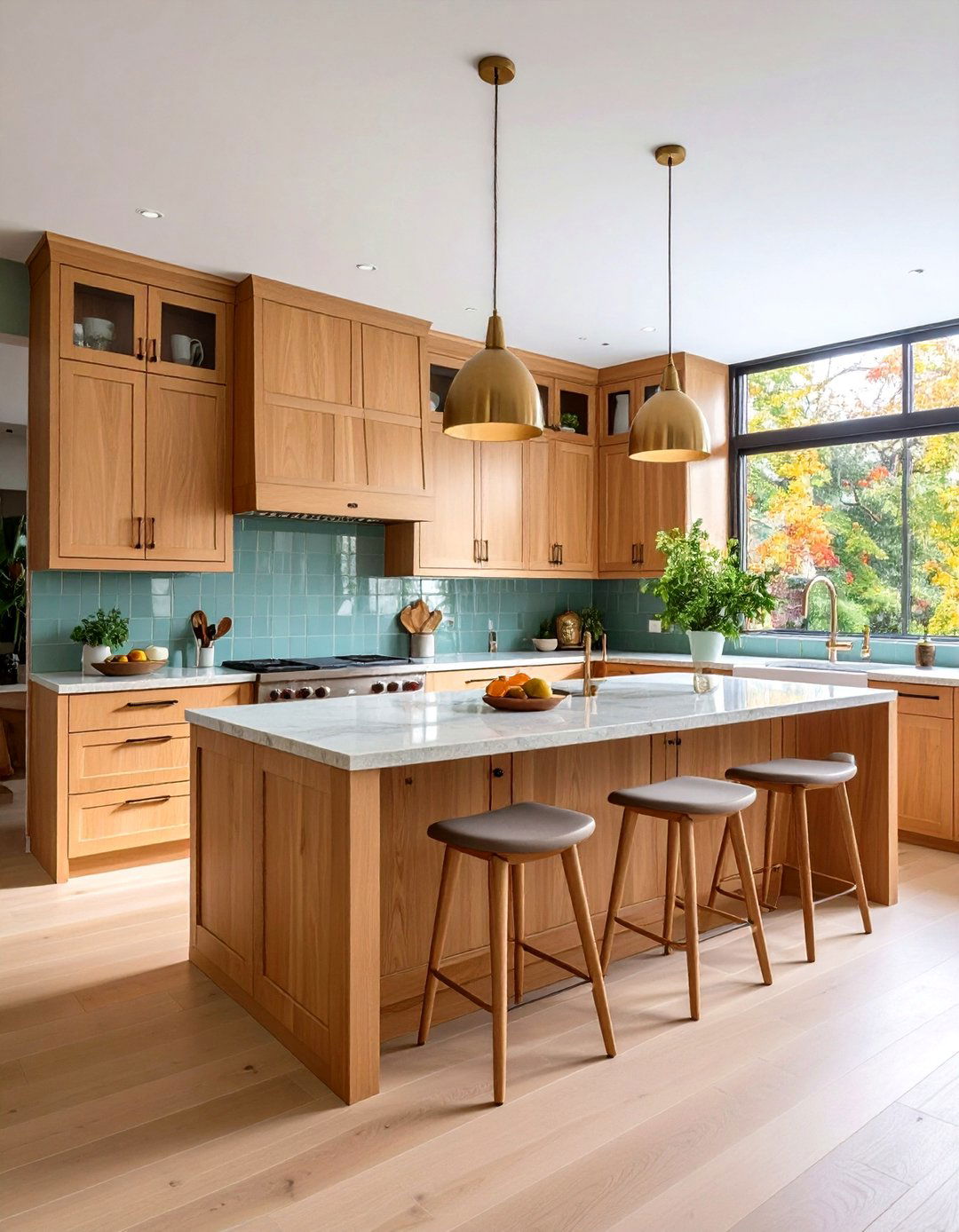

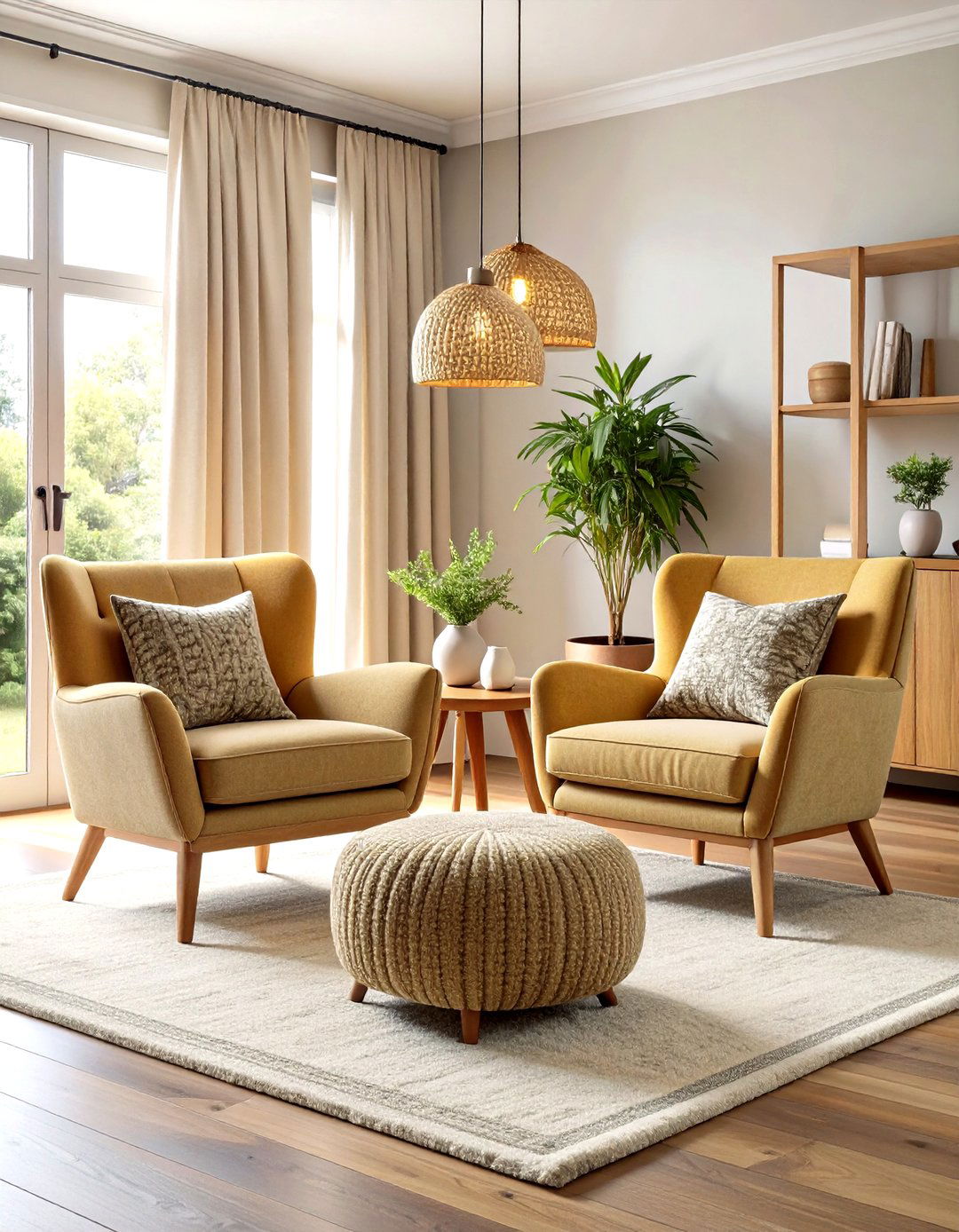

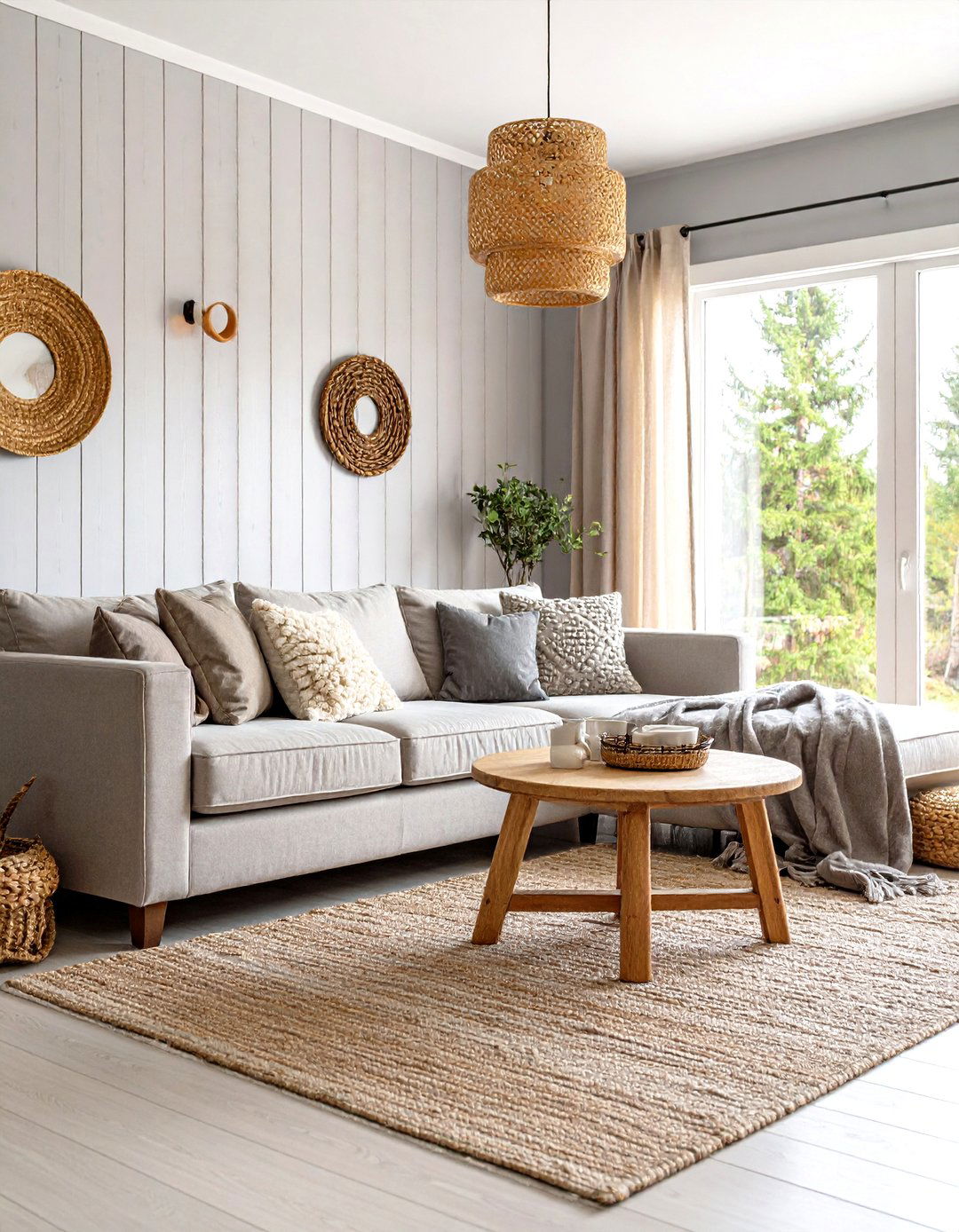
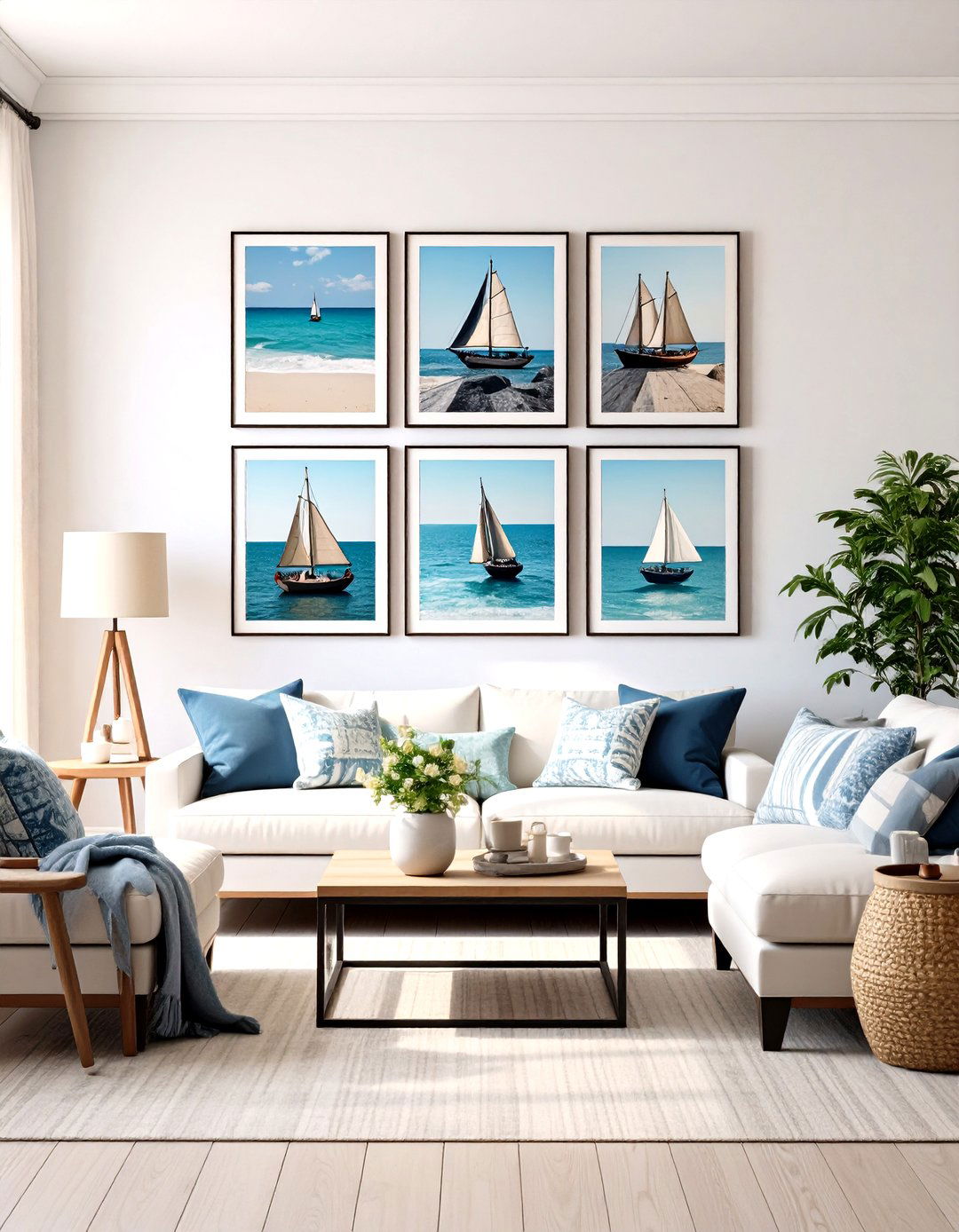
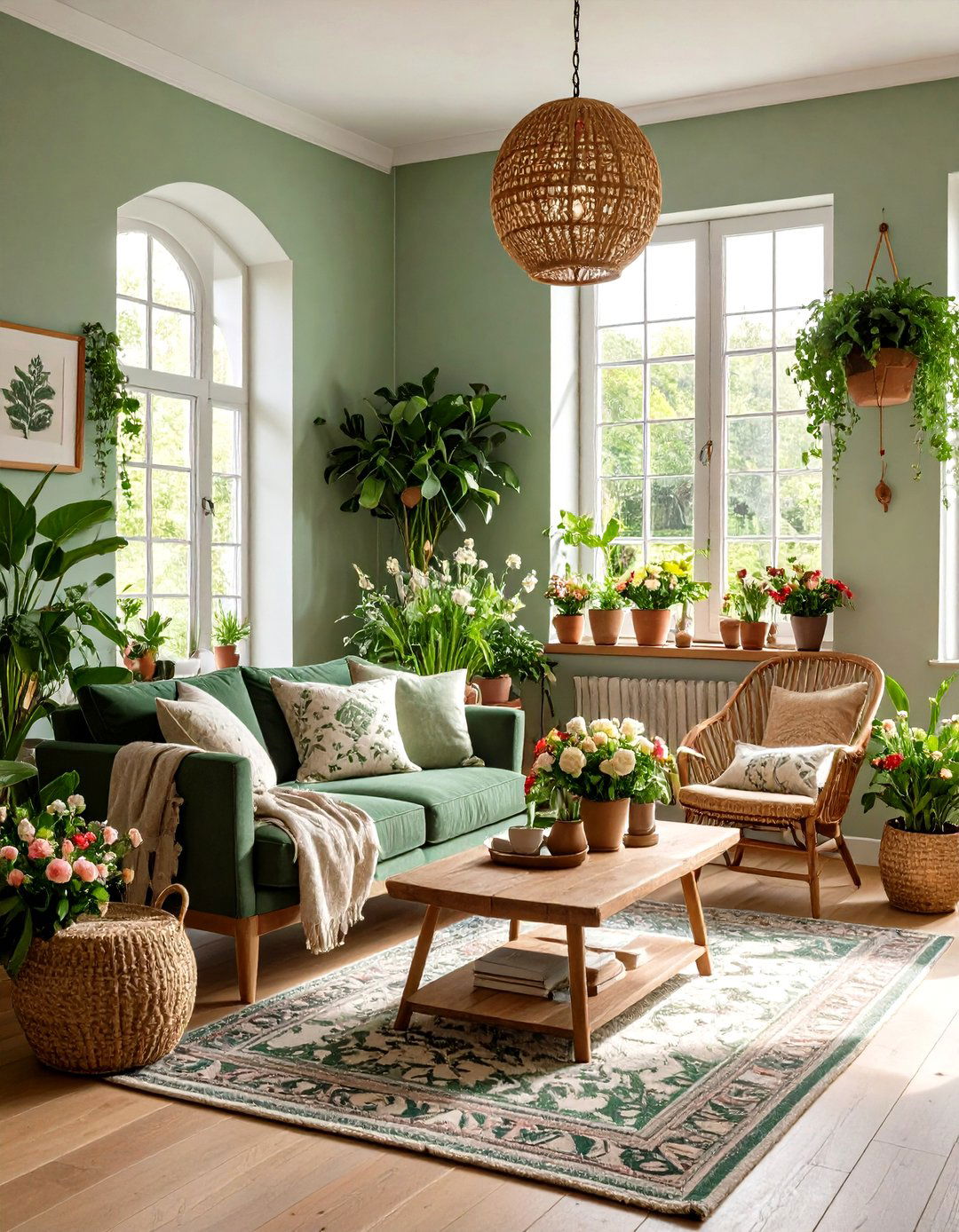
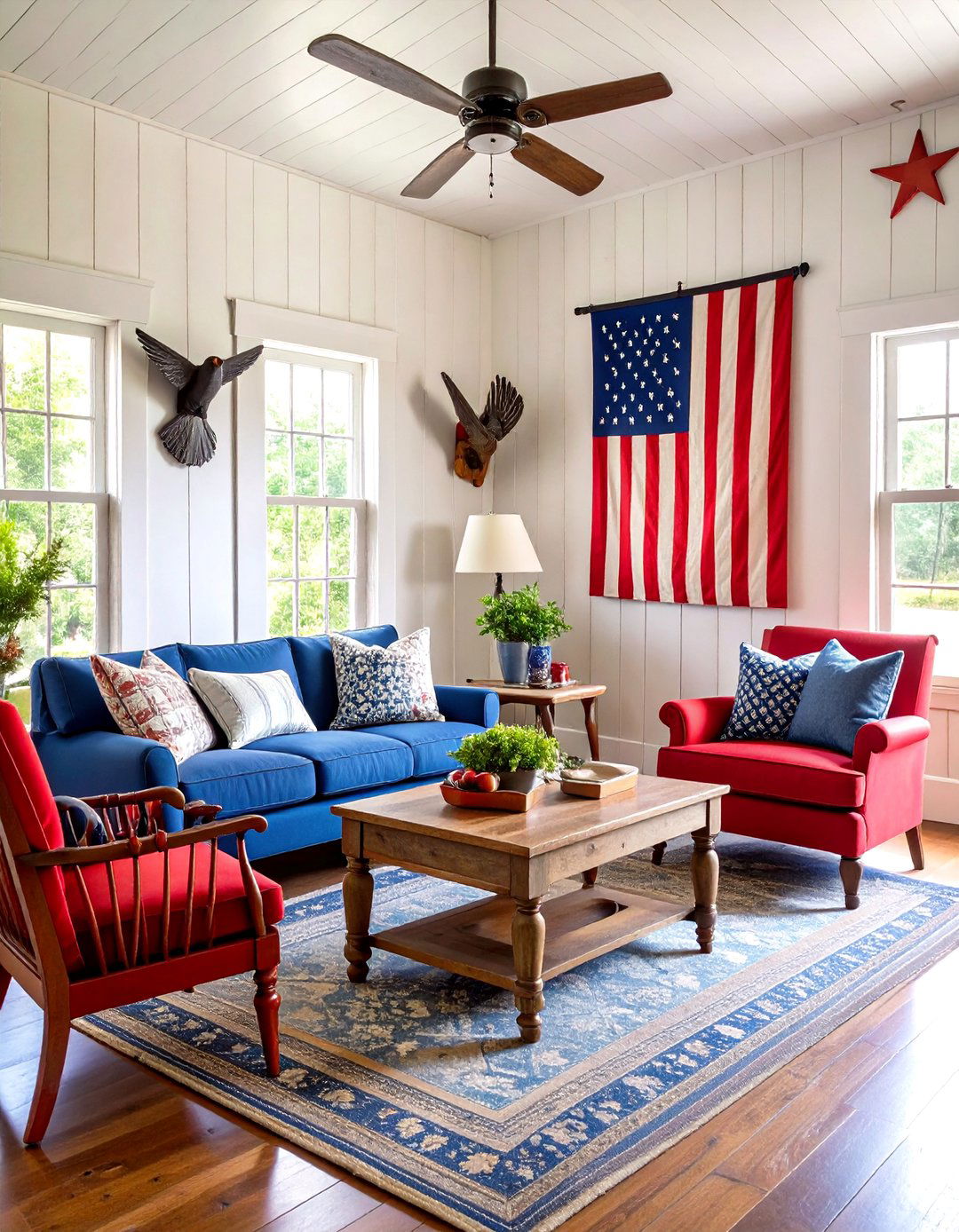

Leave a Reply